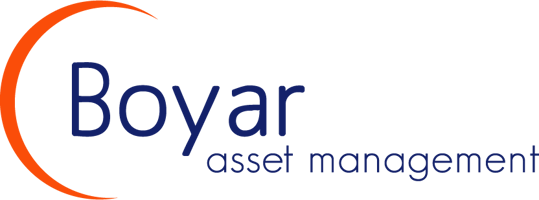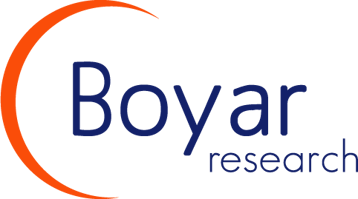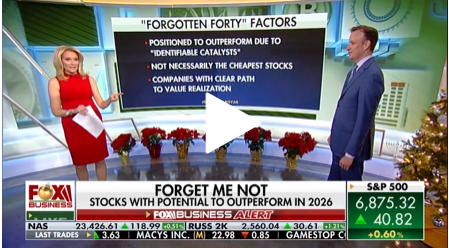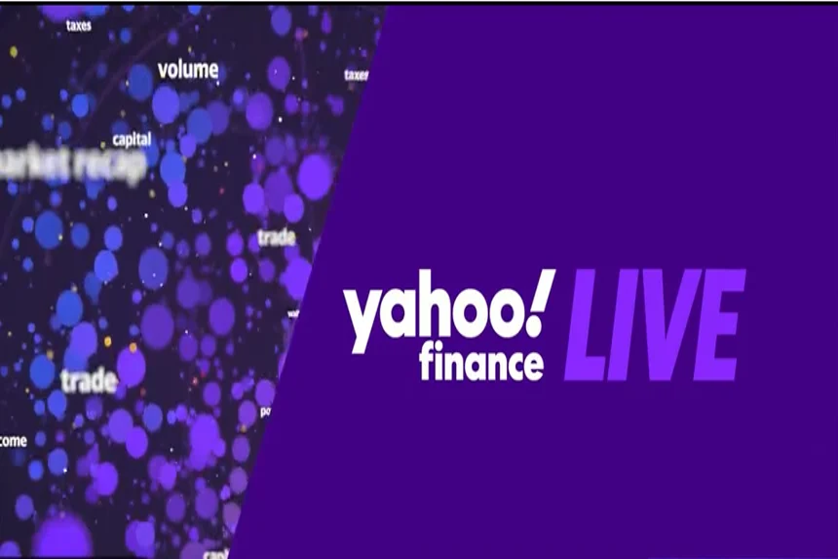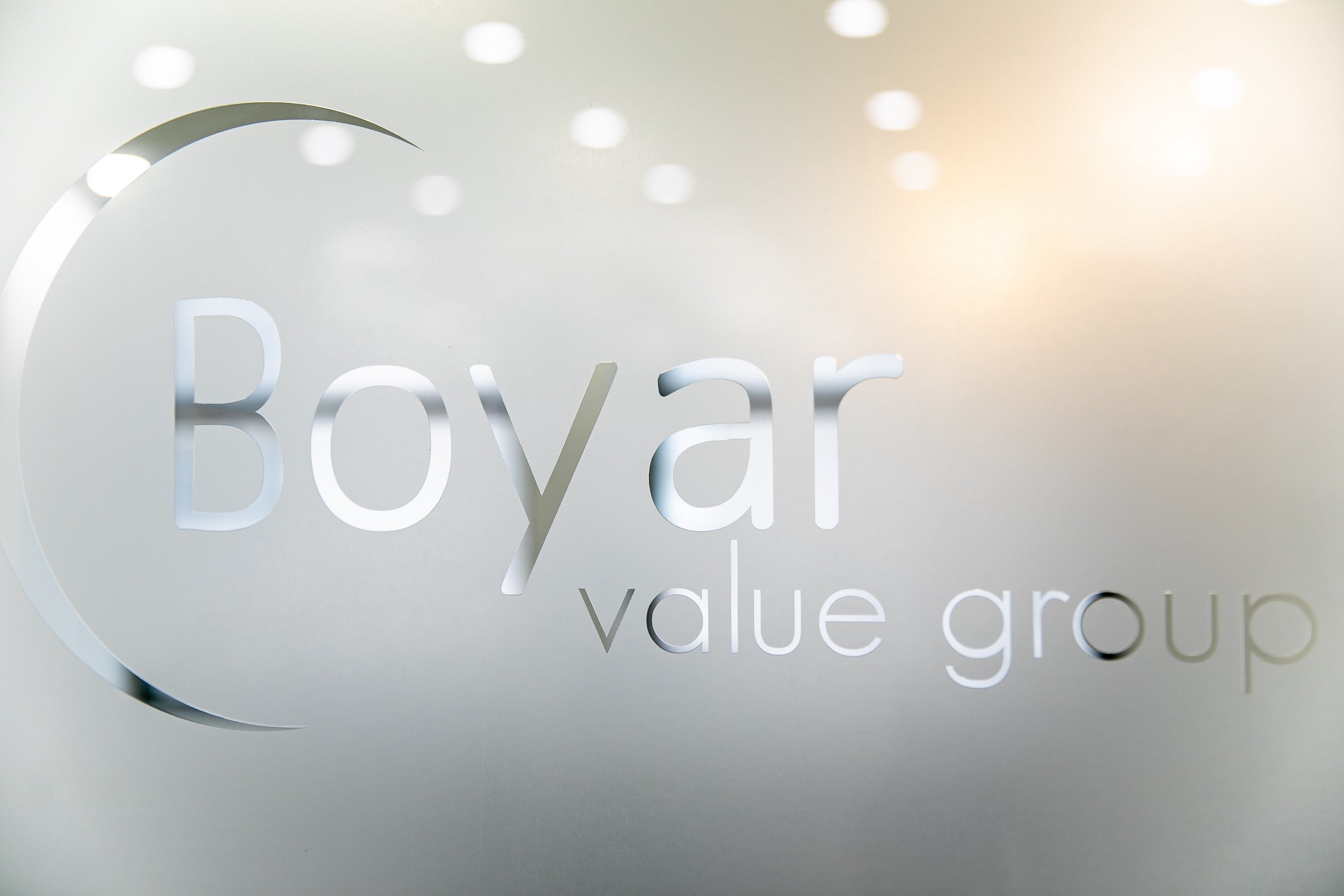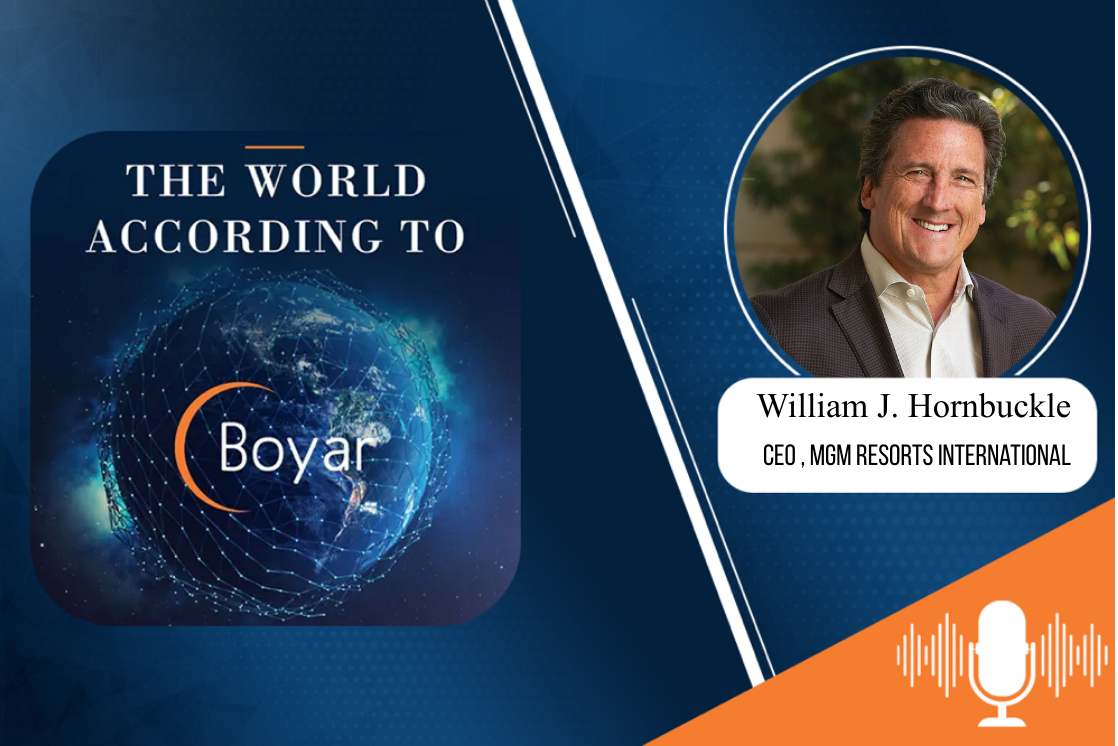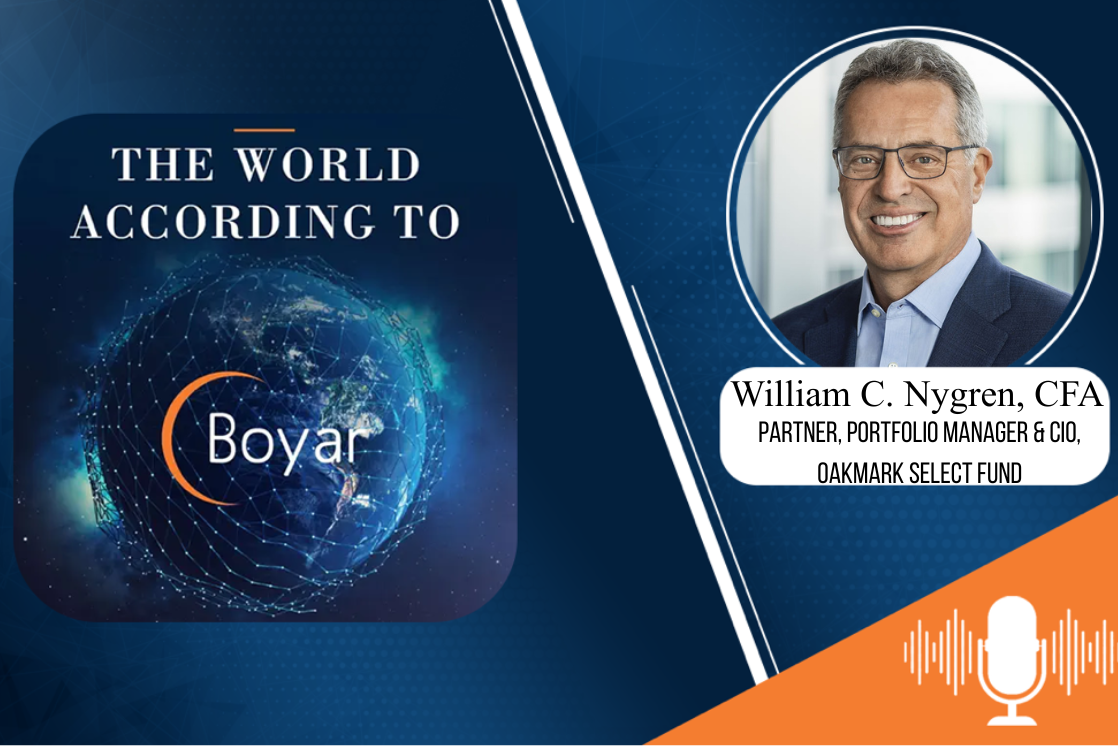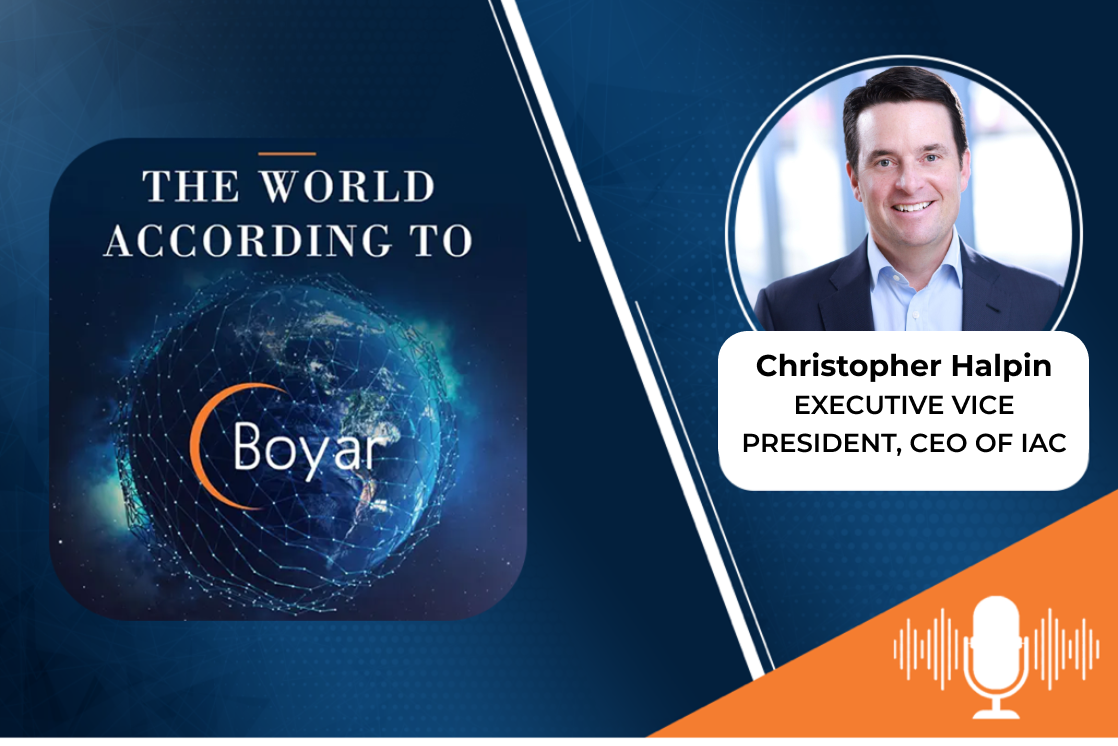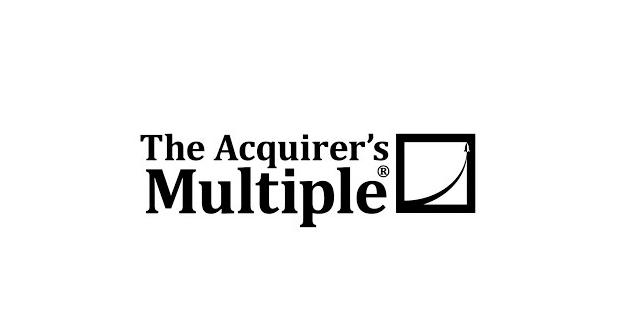Patrick Doyle, Executive Chairman of RBI on: increasing Domino’s share price by 23x; his vision for Tim Hortons and Burger King; and his thoughts on 3G Capital.
The Interview Discusses:
- His remarkable turnaround of Domino’s Pizza where he increased the share price by 23x.
- The opportunity he saw at Restaurant Brands that convinced him to invest $30 million personally in the company’s shares (and pledge to hold it for 5 years).
- The dynamics of working for a company controlled by private equity firm 3G.
- The importance of franchisee profitability for his turnaround plan.
- Tim Hortons extraordinary success in Canada and how that can be replicated in other parts of the world.
- Why Burger King International is performing well and Burger King US is struggling.
- Could Tim Hortons alone eventually be worth more than Restaurant Brands is currently?
- His role as Executive Chairman.
- What it was like being on Jim Cramer’s Mad Money.
- The difference between his role at Restaurant Brands where he is Executive Chairman and his role at Best Buy where he is Non-Executive Chairman.
- —And much more!
About Patrick Doyle:
Mr. Doyle was appointed Executive Chairman of RBI in November 2022 to accelerate growth for franchisees and shareholders. Most recently, he has served as an executive partner of the Carlyle Group, a global diversified investment firm, focused on the consumer sector. Prior to that he served as the chief executive officer of Domino’s Pizza, from March 2010 to June 2018, having served as president from 2007 to 2010, as executive vice president of Domino’s Team USA from 2004 to 2007 and as executive vice president of Domino’s Pizza International from 1999 to 2004. Mr. Doyle has served on the board of directors of Best Buy Co., Inc. since November 2014 and has been the Chairman of Best Buy’s board since May 2020.
Click Below to Read the Interview Transcript
Transcript of the Interview With Patrick Doyle:
[music] [00:00:00]
Jonathan Boyar: Welcome to The World According to Boyar, where we bring top investors, bestselling authors, and business leaders to show you the smartest ways to uncover value in the stock market. I’m your host, Jonathan Boyar. Today’s guest is Patrick Doyle, executive chairman of Restaurant Brands, which owns a collection of well-known quick service restaurant brands, including Burger King, Tim Hortons, and Popeyes. [00:00:30] Previously, Patrick was CEO of Domino’s Pizza, where he helped engineer one of the greatest turnarounds in restaurant history.
During his tenure, he delivered 29 consecutive quarters of same-store sales increases, increased system-wide sales growth from 5.6 billion to about 13 billion, and most importantly, increased the share price over 23 times, from nearly $12 in March of 2010 to $271 in [00:01:00] June of 2018. Restaurant Brands was featured in a recent issue of Boyar Research. We’re utilizing what we view as fairly conservative assumptions. We estimate that the stock is worth nearly a $100 a share. Patrick, welcome to the show.
Patrick Doyle: Thanks, Jonathan. I appreciate it.
Jonathan: Thank you for being on. Just to get right to it, with the track record I just described in the opening, I don’t think job offers were in short supply. Besides being located in Miami where you were moving, what made you choose [00:01:30] to want to work with Restaurant Brands?
Patrick: It’s a terrific business. It’s interesting, because I really came at it as both an investor and as somebody who would be coming in to help run it. What I looked at was, number one, you’ve got four brands, any one of which I would’ve been happy to own. I like all of them. They’ve all got real strengths. Things that I think can drive real value over time, [00:02:00] and frankly, from an investor perspective, there were things that I could see, that I thought could be done that were going to create real value going forward, but also, frankly, from an investor standpoint, it just looked to me like the market didn’t really understand where the four brands and five businesses were, and how it was getting valued.
You still had this hangover, I think, not believing that Tim Hortons was fully turned around. [00:02:30] Tim Hortons is doing great. It’s proved it with another couple of terrific quarters since I’ve been here, but the momentum was already there. Burger King, still lots of work to be done domestically, but I think discounting the greatness that is happening with that business outside of the US, and already a good start inside. Popeyes and Firehouse, I think they’re pretty well. Popeyes is a fabulous brand, fabulous food, good growth story, lot more on that to come.
Firehouse, [00:03:00] pretty small part of the overall today. It’s a couple of points of the cash flow of the business, but great food, great upside. The number one player in the category. Subway has obviously been struggling a bit, and so it helps when the biggest player has not been really on their game. Overall, I loved the value that I was able to come in at when I invested in the business, and I continue to love the upsides in each of the brands.
Jonathan: RBI is [00:03:30] unique in it has a controlling shareholder in 3G. How did that help impact your decision?
Patrick: In a couple of ways. First of all, I’ve known Daniel and Alex for some time, so we already had a good relationship. We’ve talked about a number of things over the years, and I’m very comfortable with them and how they view value creation, and us being aligned is obviously very, very important in what we’re able to do over time. The other thing that I think [00:04:00] is really important is that having a reference shareholder like that, if they’re viewing value creation the way they are, it allows you to make sure that you’re taking a medium to long-term view on what’s going to generate value.
If you were a fully distributed public company, as a CEO, as a board, you’re going to necessarily have to think about what short-term reactions are going to be. If you’ve got [00:04:30] a reference shareholder like 3G, as long as you’re comfortable that you’re looking at things the same way, which I absolutely am, and it’s why I agreed to become exec chair, you can take a medium to long-term view that I think is the right way to approach a business, the right way to be looking at investments in the business.
I guess the best proof of that for me was to look at what they had already done with Reclaim the Flame, for Burger King, which was a very significant [00:05:00] investment, that if you only looked at it short-term, I’m not sure it makes sense, but if you’re a shareholder who’s in it for three years or five years or 10 years, it is clearly the right thing to do for the business.
Jonathan: I think 3G is treated somewhat unfairly in the press based on what you just said and other things. Why do you think the press has them as just cost-cutting and that’s it? Is there a particular reason?
Patrick: It’s an easy story to tell, but the reality is that [00:05:30] they have shown a willingness at RBI to invest in things that are going to generate a good return. The way I think about it is you’ve split the world inside RBI into two pieces, which is those things that you’re going to invest in, that are going to generate growth in the businesses, and those things that you need to spend money on just to run the business day in and day out. The things that you run the business with day in and day out, [00:06:00] they want to be very efficient and very lean, and I completely agree with them.
What they don’t get credit for is making the investments into the business that are going to generate growth. They had done that with Reclaim the Flame. They’ve been making real investments into digital and IT. They just spent a pretty significant investment in Tim Hortons a couple of years ago, to get that on the growth track that it’s on today. They’ve shown the willingness to do that, and [00:06:30] in my conversations with them, I was very comfortable that they’re willing to continue to do that when it’s going to generate a good return for shareholders.
Jonathan: Before talking about what you’re doing at RBI, which is unbelievably exciting, I just want to briefly discuss what you did at Domino’s. The story is amazing. Essentially, during the great financial crisis, Domino’s clearly was not doing well, their sales were down significantly, and you and your team decided to create a marketing campaign where you spent millions [00:07:00] of dollars discussing how bad your food was, but most importantly, I guess, how you were going to improve it. In hindsight, it was brilliant, but that seemed like a good way to ruin a career. What made you do it?
Patrick: It’s funny. First of all, I will tell you my wife was not a particularly big fan of it. When we were talking about [laughs] what we were going to do, she was like, “So, what’s plan B?” I said, “Well, probably I have to look for a job.” [chuckles] It’s interesting, because I really [00:07:30] believe that the biggest change with consumer businesses over the course of the last 20, 30 years, is that brands used to be built based on what you said about your own brand. It was a one-way conversation. Procter & Gamble can go out 30 years ago and create whatever truth around their brands they want to because the consumer [00:08:00] fundamentally has no way to respond to it.
Fast forward to today, with social media, consumers are armed. They can respond. In fact, the truth of your brand largely lies in the perceptions of the brand that are propagated and repeated on social media. So, the pizza at Domino’s on an unbranded basis did fine. [00:08:30] On a branded basis, it did not well at all compared to its competitors. We knew we had somewhat of a real problem, and we had a very big perception problem. Our view was, first of all, take the time, which took us about 18 months to completely reformulate the pizza, and then we need to go out and communicate this in a bold way, in a way that people are going to talk about it. [00:09:00]
Going out and telling people that your product is pretty lousy is a really good way to break through with consumers. It caught on. Not only were we talking about it in paid media, but more importantly, our customers were all over it from the social media standpoint, and it changed views out there. It forced people to take another look at the brand, at the pizza, and clearly, it changed minds, [00:09:30] and sales were up virtually instantly. We launched it on a Monday, and by Wednesday we were up double digits.
Jonathan: If it hasn’t been, it should be a Harvard Business School case study, but I have not seen thus far any other brand do what you did. Clearly, it was successful being honest with your customers, but how come no one else has copied your playbook?
Patrick: It is a really good question. The real answer is, you’d have to ask everybody else in the world except me. [laughs] [00:10:00] I’m the one person who can’t speak to that. Harvard has written a case study on it, and it’s interesting that it hasn’t been picked up. The place where I would expect to have seen it by now is from somebody’s political campaign. Going out saying, “Hey, I’ve been part of the mess in D.C. I own it, and I promise you, and hold me to it, I’m going to be the person who is going to do things dramatically differently than they have been done.” It would break through in a big way. [00:10:30] I don’t understand why nobody else has done it.
I mean, you’ve got to have the right set of circumstances. We’re not going to do it at RBI because the food at each of the four brands is not broken. There are things that we need to improve, but you’ve got to have the right facts. It’s got to start from having a product that really does need to be overhauled. The question is, for brands or products that are fundamentally broken, would it make sense to go out and do that? I suppose it could also [00:11:00] apply to service, or there could be some other areas where business is really particularly broken and you decide, “Look, we’re going to break through by going out and apologizing for the mess that we’ve created up until now.”
Jonathan: You are now executive chairman of Restaurant Brands. You’re not the CEO. Executive chairman, you can mean a lot of things depending on the role. Basically, what are you doing on a day-to-day basis? [00:11:30]
Patrick: You’re exactly right. Exec chair can mean a lot of different things in different companies. In my case, what it has been up until now, is I came in to assess the strategy and the team, to start with. Are we doing the right things in these businesses, and do we have the right people doing them? Our new CEO, Josh Kobza, is terrific. He was appointed in February. He’s doing an amazing job. I am thrilled with Josh in the business. [00:12:00] A lot of the businesses though, were already very much on the right track.
The most important thing that Josh believes in strongly, and I completely support him on this, is these are big businesses. Fundamentally, we’ve got five presidents here. We’ve got four who run the US and Canadian business for each of the four brands, and then David Shear, who’s based out of Switzerland, who runs all of the businesses [00:12:30] outside of the US and Canada. We’ve got really good leaders in those businesses, and we need to give them the rope and the room to run their businesses and move fast on the opportunities that they’re seeing in their businesses.
I think generally, it means probably more resources in the business, and probably fewer resources within RBI at the corporate level. Given the more [00:13:00] freedom, pushing some of those resources down into those businesses so those five presidents can move more quickly. My job has been, up until now, looking at the plans, looking at the strategies for the businesses, making sure we’ve got the right people on those businesses, and then increasingly it turns into a job of mentoring those leaders.
Both Josh and the [00:13:30] five presidents, giving them advice and input on the businesses, helping them on some things more directly, but very careful to, as I just described, giving them more autonomy to run their business. I’m not going to try to run their businesses, and frankly, Josh isn’t either. His job as CEO, he is running the company day in and day out, but his job is to push and prod and find areas where he thinks maybe [00:14:00] things could be getting done better.
Coordinate some of those things where we think the scale of RBI can drive some real efficiency in those businesses, but then let them go after it. Once we’ve got the strategies all dialed in, my job becomes more and more about advice and mentoring those leaders and leading the board, obviously, as well as exec chair.
Jonathan: Can you just give an example of advice recently [00:14:30] that you gave one of your leaders just to get a flavor of the type of things that you’re doing?
Patrick: Probably the most common thing that I’ve found myself talking about is just going faster. I am sure every executive winds up feeling this way at some point. I still think that I’m the young, smart guy who’s figuring things out really quickly. That’s not me anymore. I got a couple of decades of experience in now. The big advantage from that [00:15:00] is speed. The depth of talent at RBI is extraordinary. There are remarkable number of really motivated, smart, capable people here.
What I bring is, because I have done some of these before, I look at some of the initiatives that have already been underway, and I can just very quickly look at them and say, “That’s right.” You don’t have to worry as much as maybe you have about, [00:15:30] “Okay, let’s stage gate that, make sure that we’re hitting the metrics, and that all of the analysis that we put into this is correct.” I can give them real confidence on, “Yes, that’s correct. Let’s just go faster.”
Jonathan: One of RBI’s biggest brands is Tim Horton, and for people outside of Canada, it’s really hard to understand how big of a brand it is within Canada. One of the stats we noted in our report on Restaurant Brands is that Tim’s app is the second most used e-commerce app in [00:16:00] Canada, with I think about 4.3 million monthly active users. Do you think Wall Street undervalues the brand equity that Tim has?
Patrick: [laughs] First of all, because it’s almost impossible to overvalue the brand equity they have, it is extraordinary, and it is essentially unique in the restaurant industry in terms of the love that consumers in Canada have for that brand. It unironically uses [00:16:30] the maple leaf. It uses the flag of the country as its logo. It’s pretty extraordinary. I think the statistic is that about 80% of Canadians have been in a Tim’s in the last 30 days. In my old life, a good customer was about once a month. At Tim’s, you got a lot of people who are once or twice a day.
The frequency and loyalty on that business, on the brand, [00:17:00] the trust in that brand is just remarkable. There simply isn’t anything like it in the US, in terms of the depth of the brand strength that Tim’s has in Canada. Our challenges at Tim’s are to figure out, how do you continue to extend that brand strength in Canada, and then how do you expand it around the world? We’re well on the way on that.
It clearly does not [00:17:30] mean as much in the new markets as it does in Canada. So our job is to figure out, “Okay, how do you take that brand, translate what it means in Canada to people outside of Canada off to a really good start?” That’s the big challenge.
Jonathan: You mentioned earlier in the interview that you came in this as an investor, and you put a substantial amount of your own money into Restaurant Brands. When you started, earlier in your career, you worked at Gerber Canada, so presumably, you spent [00:18:00] a lot of time in Canada. Did that give you, as an American, a unique insight into how powerful Tim’s was?
Patrick: I think it did. Yes, I lived in Canada for a couple of years. My oldest daughter was born up there and is proudly still a dual citizen of Canada and the US. What I will tell you, and that was stunning to me, is I was up there in the mid-’90s, and it was already an amazing brand. It has fundamentally doubled in size [00:18:30] since I lived up there. It is even bigger, even stronger, even more beloved today than it was.
The people who owned and ran that business, Ron Joyce and Tim Horton himself, Tim sadly passed pretty early in the run of the business. It really wound up being Ron Joyce was running it for a long time, and then Paul House. The two of them did a really remarkable job [00:19:00] with the business. It had a few pretty tough years, and then Axel and the current team up there have been running it for three or four years now, and just put it on a remarkable path.
Jonathan: I understand it’s on a growing trajectory. You open your 600 store in China, it’s 25% of your recent new net restaurant growth is from Tim’s, but it’s still not even close to the dominance it has in Canada. Is that something [00:19:30] that is possible? Can you get 80% of the way there? How is that done?
Patrick: If we can get 50% of the way there, we’ll have tens of thousands of restaurants outside of Canada. What Tim’s has that is important, I think the Canadianness is important, but it’s how that translates to consumers. What I think Tim’s means to people, both in Canada and around the world, [00:20:00] is that it is just a good, honest brand. It is what it is, it’s not trying to be fancy, it just gives you good product, good value for money. They’re doing some really interesting work up there, and expanding it into even more of a total beverage business, as well as expanding day parts later in the day.
There is something about the brand and the essence of the brand that [00:20:30] is very much reflective of how people view Canada, and really, how Canadians view themselves, which is, “We’re going to be straightforward and honest and give you a fair value for what you’re buying. We’re not trying to be fancy or anything about what we’re doing. It’s just going to be good, honest beverages and food.”
What Axel and the team have done in the last few years is upgrade the quality of the food. They went to fresh cracked [00:21:00] eggs, which I think was really, really important in upgrading the quality and the perception of quality. It also just adds to that, “Look, we’re going to give you a bagel with an egg on it. It’s going to be an egg.” It’s what the brand is, and what it means to people. I think there is a way to take that, make that work everywhere.
Jonathan: You’ve talked about the opportunity with Tim’s is almost the reverse of the opportunity that McDonald’s had a few years, or more than a few years ago, when they essentially created a whole new category, [00:21:30] which was breakfast. Tim’s primarily serves coffee and donuts. That’s great in the morning, but less strong in the afternoon and the evening. You want to change that, which is great. How do you do that? How do you get people who are accustomed just to come in the morning to go there all day?
Patrick: [chuckles] The great news is it’s pretty efficient to be able to do that. When they’re coming in the morning, you can communicate with them about what will be available if they come back later in the day. [00:22:00] They already know where we are, it’s already a habit for them. We do advertise it on television, but what’s interesting is, if you’ve got people who are using the Tim’s app, and you talked about being the second most used e-commerce app in Canada, well, that means they’ve already got it there. So, it’s very efficient to go back and communicate with that customer, and say, “We’ve got a loaded bowl that will be great for you for dinner.”
Both [00:22:30] awareness drive, and awareness of our offerings in later in the day. Day parts, but also giving them offers to do it and to drive trial. It is very similar to what McDonald’s did a long time ago, and I am sure that there were people, when McDonald’s started talking about, “We’re going to drive breakfast,” were looking at it saying, “You guys sell hamburgers and french fries, how can it possibly make sense for you to go into the breakfast business?” [00:23:00] The answer is, because McDonald’s, the brand strength that they had, the ubiquity and availability of their restaurants, people already knew where they were.
It actually wasn’t that hard for them to go into a new day part. The beauty of Tim’s is there are almost three times as many Tim’s per capita in Canada as there are McDonald’s per capita in the US. With the strength, the distribution, [00:23:30] we have customers already knowing us, doing business with us, feeling good about it, getting them to try us for something else during the day is, I think, relatively straightforward. The team is doing a great job on it.
Jonathan: In the bull case scenario for Tim’s, if you execute, can this become Starbucks?
Patrick: I hope a lot more than Starbucks. [laughs] In terms of what it does, Starbucks is a [00:24:00] terrific brand, and obviously, the growth globally has been extraordinary with Starbucks. There are ways in which the Tim’s brand, I think, is a broader brand than Starbucks. I think there’s an awful lot that we can do with this brand over time.
Jonathan: If that is true and that happens, Tim’s could be eventually worth more than the entire current enterprise value of RBI now.
Patrick: That feels a lot like a forward-looking [00:24:30] statement, but do I think that the brand strength of Tim’s is extraordinary and something that we can build a really big business on over time globally? The answer is, absolutely yes.
Jonathan: RBI is essentially an all-franchise business, which means you make your money on franchise fees. Who do you view as your customer? Is it the franchisee or the person buying the Whopper or chicken sandwich?
Patrick: I always have to be careful when I [00:25:00] say this, because look, at the end of the day, what really matters is the customer base, the consumer, how they feel about Popeyes’ chicken sandwich, or the cup of coffee they’re getting from Tim’s, or the Whopper, or the hook and ladder from Firehouse. As a franchisor, we do have to decide, where are we going to focus? What is most important to us? The answer to that is, it’s the franchisee. Ultimately, the product that [00:25:30] we sell, putting air quotes around that, is the unit economics of the restaurants that our franchisees have chosen to invest in. Whether they built it or they bought it from somebody else.
Ultimately, our success as a franchisor is going to be built on the success of the franchisees. It’s a really easy product to measure. It is, what did they spend to build it, and [00:26:00] how much cash flow is it generating for them as a result of the investment that they made? You know that the first quarter I was here, we started releasing the cash flow by brand, in the home markets. That, I truly believe is the most important measure.
If we are improving that, I think investors in RBI stock can build confidence in what the future is going to be of this business, [00:26:30] because ultimately, that’s what’s going to generate more restaurants being built, because the franchisees know that the returns they get are good, and that the trend is that they’re getting better. If they’ve got continued confidence that they’re already good enough and that they’re going to get better, then you’re going to get more capital coming in, more great operators coming in to run those restaurants. They’re the ones who ultimately take care of the final [00:27:00] consumer.
Jonathan: Burger King International, it’s really running on all cylinders and it’s doing great. Burger King US, as you put it, is a little bit of a fixer-upper. Intuitively, it would seem like it would be a lot easier to sell hamburgers in the US than in Europe or Asia or whatnot. Why is one working so well and one not so well?
Patrick: It’s really interesting. I will tell you, it was the same issue at Domino’s. The international [00:27:30] business was better sooner at Domino’s than the domestic business was. Sometimes it is a benefit to have a smaller scale business, and a master franchisee is occasionally quicker to adapt to things than the home market may be, which is just that much bigger. That is very clearly the case in Burger King. Outside of the US, we are a [00:28:00] far more digitally forward business today than we are domestically. There are many markets where 100% of the orders inside the restaurants are digital, over kiosks.
The assets are generally in better shape, meaning the restaurants look better outside of the US. Some of that is just simply age, but they’ve also, I think, more consistently reinvested in them. The food is great in the US, and they’ve taken the great [00:28:30] food, the Whopper, in the US, and I think done some really interesting things to adapt it locally in some of the international markets. All of which has led to, on average, better returns on those restaurants. More have been getting built, which means that there are more advertising dollars every year to promote the brand and the business. You get into a virtuous circle, and you’re attracting great operators. It just feeds [00:29:00] on itself.
We’ve got a lot of really good operators in the US, but we have had some that haven’t been as engaged. We had a number that had taken on too much debt. Frankly, combined with our average returns not being high enough on those restaurants, and they had gone backwards during the pandemic. Shame on us for letting it go the wrong direction on average results, [00:29:30] maybe shame on some of them for having put a little too much leverage onto some of those larger restaurant groups. We’ve got some things that we’ve got to work out of. All of that led to then a, frankly, inability to reinvest in the restaurants the way they should have.
Some of the restaurants are older than they should be, and have gone longer without a refresh. All of those things start playing, and then that means your advertising dollars aren’t growing the way they should. You’ve got to turn [00:30:00] that around. That is what led to the Reclaim the Flame program, which was, the company is going to step up, we’re going to get the momentum going the right way again, we’re going to get better engaged with our franchisees. We’re going to work through some of these tough situations with franchisees.
We’re going to invest in more advertising dollars. We’re going to put some matching dollars around getting some restaurants refreshed and reimaged, [00:30:30] and that gets the momentum going again in the business. A reminder, again, I had nothing to do with that. That was all done and in place and already getting executed before I got here. You can see it. It’s playing through quantitatively in the numbers and qualitatively in our franchise system, and our team that runs Burger King here in Miami, getting more and more aligned. We’ve got a lot of work to do. [00:31:00] It’s going to take time. We’ve got to continue earning our way here in Miami.
We’ve got to continue being smart about how we promote the brands, how we price, all of the things that we’re doing as the franchisor need to continue to be smart, we’ve got to generate a better average business outcome for our franchisees. They’re giving us credit for the efforts, I feel good about how the trust and relationship is [00:31:30] growing, and it’s probably more on us to continue to prove that for a while. I give them credit for hanging in there, working through what was not an easy stretch. They’re seeing the results going, and hopefully, that builds some real momentum around the brand and the business, and that continues to feed it.
Jonathan: One of the competitive advantages you said that you have is the Whopper. You’ve actually said it has more brand equity than Burger King itself. I was curious what you mean by that. [00:32:00]
Patrick: It’s incredibly well-known. The Whopper itself is viewed as a very high-quality product, a great, better burger. It is true, and we’re given credit for that, by consumers. Today, look at the sales results. In the last few years, we have not been given that credit on Burger King overall. What we’ve got to do is turn that into full credit around all of Burger King, and that [00:32:30] the total experience and whatever you’re buying from us is viewed as being great, but the base on that has got to be to continue to grow from that strength that we’ve got with the Whopper.
Jonathan: How do you do that?
Patrick: I think there are a lot of things that we can continue to do with the Whopper to grow it. That is going to be part of it, and if you’ve seen any of our advertising-
Jonathan: It’s hard to miss.
Patrick: – it’s not subtle about driving what we think is the true brand asset [00:33:00] here. Then, we’ve got to make the rest of the experience every bit as good as it is when you get a great Whopper. That means service needs to improve. It means our restaurants need to get refreshed and look better. We’ve got to do things with the whole menu to make sure that everything is as good as the Whopper is, that the experience the customer gets is as good as the Whopper is, that the restaurant looks as good as the Whopper is. When we’ve done all of that, then [00:33:30] I think the Burger King brand becomes as good as the Whopper brand.
Jonathan: I saw that you’ve been on Jim Cramer’s program multiple, multiple times. They’ve been really cool appearances. Just what was it like being on that show?
Patrick: Jim has been really, really kind to me over the years, and the Domino’s, and he’s getting behind RBI now. Jim is an incredibly smart guy. He’s a really good interviewer. I love it. I love interacting with him. Frankly, it’s an interesting [00:34:00] thing. I’ve had different leaders talk to me about the process of presenting their business case and their company to investors, and how they react to it, and some love it and some don’t. To me, the real value in talking to you today, in talking to Cramer, in talking to investors and to analysts, is it often makes me think.
It’s a funny thing. There are people who [00:34:30] do really well figuring things out on their business by going into a room, and closing the door, with a clean sheet of paper, and thinking through their business. Say, “What else can we be doing? Where are the opportunities?” I think best by talking about things. Go back to Jim, often, when Jim has pushed me on things, live on air, I’m thinking about it going, “You know, that’s an interesting take. I wonder if we’re missing something there.” [00:35:00] I give him credit for pushing on something.
Anytime I’m out talking about RBI, and people are asking me questions about RBI, it helps me to think about the business and the plan. It helps me further my own thinking on it. Jim has helped me a lot with that over the years.
Jonathan: Besides being executive chairman of Restaurant Brands, you’re also chairman of Best Buy, which is another great brand and a great retail store. [00:35:30] Can you contrast your role there with your role at RBI?
Patrick: Sure, yes. It’s very different. I’m not the executive chair at Best Buy. Corie is a phenomenal CEO. I am just a huge fan of hers. It is a very different role. I’m there for board meetings, I’m there when she needs me. I talk to her regularly, but certainly not daily. It’s a pretty different thing. I don’t have a desk at Best Buy. I am [00:36:00] physically there generally only for board meetings. So, I have conversations occasionally from a distance. It’s a very, very different thing. As executive chair, right now I’m in the office, basically every day, when I’m not traveling for something related to RBI. Very different level of time commitments.
There, I run the board, and I’m there as a resource for Corie, but I’m nowhere near the day in, day out of [00:36:30] the business. Here, I’m in the office, I’m more deeply involved going down. Particularly to the five business unit presidents, I have a lot of direct conversations with them. Over time, as Josh has more and more settled in, and I’ll tell you, he’s getting there really fast. He’s brilliant, he’s doing a great job, then there’s a point at which I got to back off a little bit and give him the space to run the business day in and day out, which he’s already doing really, really effectively. [00:37:00] Big difference between being an executive chair and a non-executive chair.
Jonathan: Why did you decide to go on the board of Best Buy in the first place? Is there any particular reason?
Patrick: I went on the board there almost 10 years ago now. I think it was 2014. There were a number of reasons. It had been going through a turnaround, it had had a rough stretch, Hubert Joly was still the CEO when I joined the board. I thought that there were things that I could add, as they were thinking about, [00:37:30] particularly how the digital was going to affect their business. They’re now about a third e-commerce. It was also about what I thought I could learn. Anytime you’re on a board, it’s always going to be about both. What can I add to this business? How can I help them be better? Also, what am I going to learn?
If you’re very focused on what’s happening in the digital world, being on the board of the leading consumer electronics, business retailer, service provider out there is going to give you [00:38:00] a lot of insights into where consumer behavior is in consumer electronics, how they’re using devices, how that’s predicted to change over time. That helps me in my day job with RBI.
Jonathan: Patrick, you’ve been unbelievably generous with your time, and it was fascinating discussing your career at Domino’s, what you’re accomplishing at Restaurant Brands, and your vision of it, and even talking about Jim Cramer. I just want to thank you for [00:38:30] being on The World According to Boyar.
Patrick: Thanks, Jonathan. I really appreciate it.
Jonathan: I hope you enjoyed the show. To be sure you never miss another World According to Boyar episode, please follow us on Twitter, @boyarvalue. Until next time.
[music]
[00:38:52] [END OF AUDIO
Important Disclosures. The information herein is provided by Boyar’s Intrinsic Value Research LLC (“Boyar Research”) and: (a) is for general, informational purposes only; (b) is not tailored to the specific investment needs of any specific person or entity; and (c) should not be construed as investment advice. Boyar Research does not offer investment advisory services and is not an investment adviser registered with the U.S. Securities and Exchange Commission (“SEC”) or any other regulatory body. Any opinions expressed herein represent current opinions of Boyar Research only, and no representation is made with respect to the accuracy, completeness or timeliness of the information herein. Boyar Research assumes no obligation to update or revise such information. In addition, certain information herein has been provided by and/or is based on third party sources, and, although Boyar Research believes this information to be reliable, Boyar Research has not independently verified such information and is not responsible for third-party errors. You should not assume that any investment discussed herein will be profitable or that any investment decisions in the future will be profitable. Investing in securities involves risk, including the possible loss of principal. Important Information: Past performance does not guarantee future results.
Never miss another podcast click here to subscribe today!
Available wherever you download podcasts:
About The Boyar Family Of Companies
Boyar Asset Management
We have been managing money since 1983 utilizing our proprietary in-house value-oriented equity strategies. We manage money for high net worth individuals and institutions via separately managed accounts. To find out how we can help you with your money management needs please click here
Boyar Research
Since 1975 we have been producing independent research on intrinsically undervalued companies across the market capitalization spectrum and in a wide variety of industries using a business person’s approach to stock market investing. To find out how we can help you with your research needs please click here

